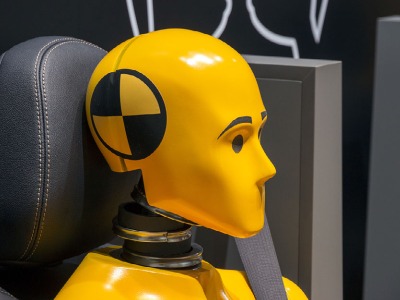The Growth of Vehicle Safety
 May 12, 2023
May 12, 2023

In the dynamic world of automobiles, safety has always been a paramount concern. Over the years, vehicle safety has made remarkable advancements, saving countless lives and reshaping the way we think about transportation. From humble beginnings to the integration of cutting-edge technologies, the growth of vehicle safety has been a journey marked by innovation, research, and a commitment to protecting drivers, passengers, and pedestrians alike.
The Birth of Safety: From Seat Belts to Airbags
The journey towards improved vehicle safety began with fundamental safety features like seat belts. In the 1950s, automakers started introducing seat belts as a standard feature, leading to a significant reduction in injuries and fatalities during accidents. Building on this foundation, the development of airbag systems revolutionized occupant protection. First introduced in the 1970s, airbags have evolved to become more sophisticated, with advanced sensors and multiple airbags throughout the vehicle.
Crumple Zones and Impact Absorption
In the pursuit of enhanced crash safety, automakers implemented innovative designs to absorb impact energy and protect passengers. Crumple zones, strategically engineered areas of the vehicle that deform upon impact, help to dissipate collision forces and redirect them away from the cabin. By sacrificing certain parts of the car's structure, crumple zones increase the chances of survival and minimize the severity of injuries during crashes.
Electronic Stability Control (ESC) and Anti-lock Braking Systems (ABS)
The introduction of electronic stability control (ESC) and anti-lock braking systems (ABS) brought significant advancements in vehicle handling and braking performance. ESC utilizes sensors and microprocessors to detect and prevent skidding or loss of control during sudden maneuvers, reducing the risk of rollovers and collisions. ABS, on the other hand, prevents wheel lock-up during braking, allowing drivers to maintain steering control and shortening stopping distances.
Advanced Driver-Assistance Systems (ADAS)
The integration of advanced driver-assistance systems (ADAS) represents a monumental leap in vehicle safety. ADAS technologies, such as forward collision warning, automatic emergency braking, lane departure warning, and blind-spot monitoring, provide real-time assistance to drivers, helping them avoid potential hazards and mitigate the risk of accidents. These systems rely on sensors, cameras, and radar technology to continuously monitor the vehicle's surroundings and alert drivers to potential dangers.
Pedestrian and Cyclist Safety Innovations
Recognizing the importance of protecting vulnerable road users, automakers have been actively developing safety features to enhance pedestrian and cyclist safety. These include pedestrian detection systems that use sensors and cameras to detect pedestrians and apply automatic braking if necessary, as well as cyclist detection systems that provide warnings to drivers when a cyclist is detected in close proximity to the vehicle.
Autonomous Emergency Braking (AEB) and Collision Avoidance
With the rapid advancement of technology, autonomous emergency braking (AEB) systems have emerged as a critical safety feature. AEB systems use sensors and cameras to detect imminent collisions and automatically apply the brakes if the driver fails to respond in time. Some advanced AEB systems can even identify pedestrians, cyclists, and other vehicles, thereby significantly reducing the likelihood and severity of accidents.
Conclusion:
The growth of vehicle safety over the years has been truly remarkable, transforming the way we perceive and interact with automobiles. From the introduction of seat belts to the integration of advanced driver-assistance systems and autonomous emergency braking, the commitment to protecting lives on the road has driven continuous innovation in the automotive industry. As technology continues to evolve, we can anticipate even more sophisticated safety features that will make our roads safer for everyone. Ultimately, this growth in vehicle safety serves as a testament to the unwavering dedication of automakers to ensure








